#northern shrike
Photo

shike
1K notes
·
View notes
Text


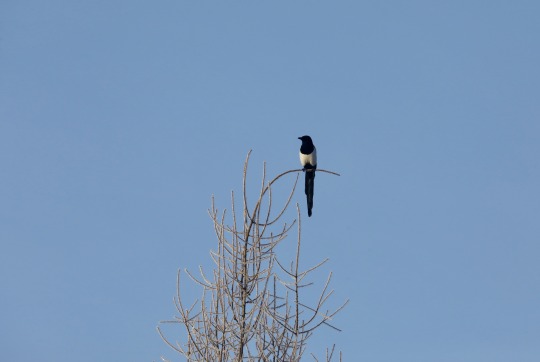

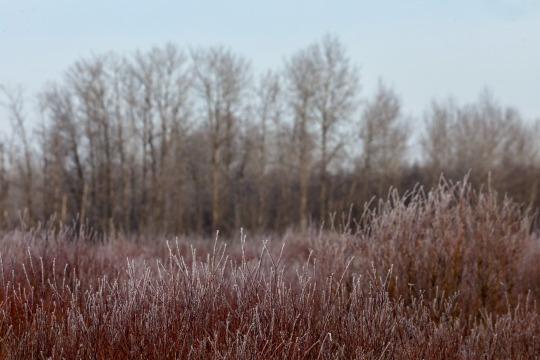

Golden hour on a frosty morning in Sax Zim, Minnesota
Taken February 2024
#bogs#minnesota#my photos#my places#ntnav#northern shrike#black-billed magpie#rough-legged hawk#abandoned buildings#frost
147 notes
·
View notes
Text
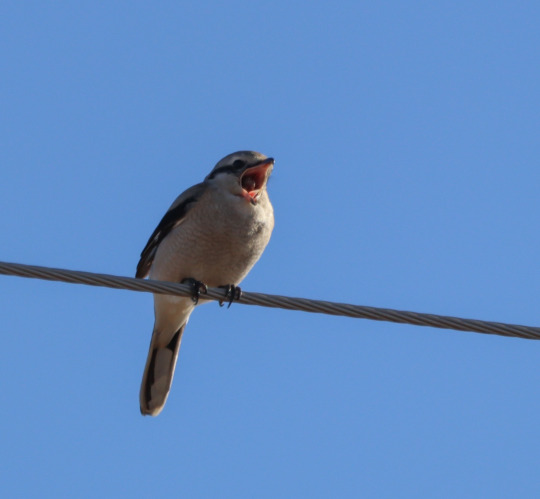


lifer 222: northern shrike!
this one expelled a pellet for us
jan 3, 2024
nebraska
#my photography#photographers of tumblr#bird photography#original photography#birding#birds#birdwatching#nature#birds nature#shrike#northern shrike#inaturalist
54 notes
·
View notes
Note
trick or treat!!
Places in your hands the Northern Shrike, Lanius borealis

(Source)
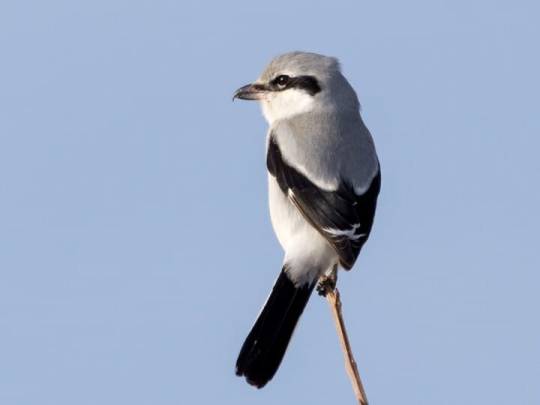
(Source)

(Source)

(Source)
Shrikes are of the few carnivorous songbirds, and they often store their food by impaling it on thorns or branches.
Their nests are so deep that often when the female sits in it, only her tail can be seen.
Their songs can include imitations of other species in the area.
youtube
7 notes
·
View notes
Text
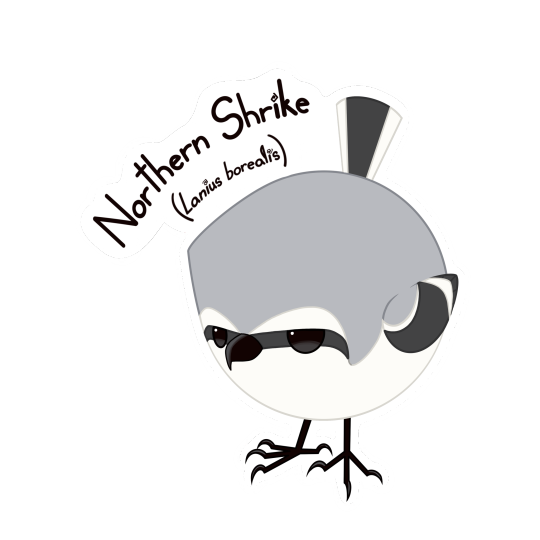

#bird#birds#bords#blorbs#birbs#birblr#birdblr#ornithology#northern shrike#shrike#lanius#lanius borealis#butcherbird#sticker#stickers#bird sticker#bird tumblr#birdwatching#birding#birder#art#small artist#digital art#artists on tumblr#cute art#procreate
15 notes
·
View notes
Text
there is something about shrikes. hehe. girl yessss! impale that creature on a tiny spike! you look so small and harmless and your actions are terrifying! woooo!!!! Kill so horribly with the body of just some songbird!! show them how gruesomely you can murder!!!!!
#shrikes#butcher birds#shrike#loggerhead shrike#I wanna be like them. kind of.#northern shrike#hehe. *kicks legs* killer song bird#real talk tho I would be so so terrified if I saw that. imagine oh my god.
137 notes
·
View notes
Photo

“Remember me, love
When I’m reborn
As the shrike to your sharp
And glorious thorn.”
A piece inspired by Hozier’s “Shrike”. Please do not delete caption or re-post. Thank you <3
Art (c) emerald-soul
#hozier#shrike#northern shrike#my art#illustration#artists on tumblr#not ai generated#emerald-soul#art#bird art#wildlife
9 notes
·
View notes
Text

reupload cuz i noticed a mistake but i finally finished this piece :] hoping that my professor won't look too closely at the wings LOL cuz i tried to make them as accurate as possible but it was difficult (its not an art class anyways, he's just a huge bird guy)
[Image ID: A digital illustration of a Northern Shrike stabbing a mouse through a thorn, with thrasher flaming text in the background that reads "Northern Shrike" in all caps. There are flames flowing backwards from the bird's eyes, and its mouth is open. The belly of the bird is facing the viewer, with it's wings spread around it as it holds the limp mouse with its left foot. The whole drawing is outlined in bright red. End Image ID]
2 notes
·
View notes
Text
Since I made an update on the dolls, you can have another update of Screamer and his harpy form

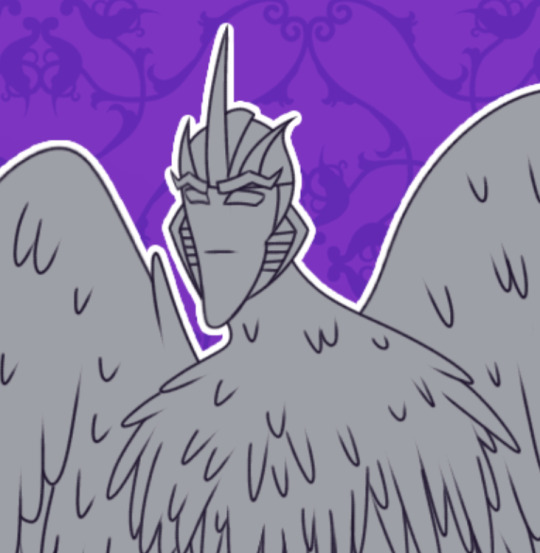

One down, two more to go (accompanied by more to come)
#lunarfeat’s art#transformers prime#tfp starscream#harpy#Magic Learners 'n' Seekers au#Idk who is after starscream#I'm torn between Acree (having a Northern Mockingbird harpy form)#or Airachnid (having a Loggerhead Shrike harpy form)#decisions decisions
22 notes
·
View notes
Text
Do ya'll like dogs? I have a dog I love her a lot she is so silly 🌌
#dogs are the best#cats too#and ducks#and penguins#birds in general#northern shrikes are my fav birds rn#they are blue and pear sized#!!!!!#perfect to hold
0 notes
Text

Meet Messengerverse!Error!! He's kinda goofy :)
-He doesn't really have a name, but he will answer to anything he can even Vaguely associate with himself. He most readily answers to Shrike, or The Butcher Bird though.
-He hates touching the ground, outright refusing to if he has the chance. [He's even crashed from unplanned landings before, he got up & flew away soon after though, similar to a stunned bird :)]
-He loves Outertale still, but not for all the same reasons. He still thinks it's one of the most peaceful AUs, but he also enjoys how little it feels like standing on the ground. Sitting around the flouting meteors of Outertale, it hardly feels like he's on the ground at all.
-He doesn't actually fly using his wings, but instead a type of magic that his wings help with. He still looks a bit goofy in the air though.
-His coat is big and would drag across the floor if he actually stood on it, he thinks it's fine though, because he doesn't plan on getting close enough for it to be a problem.
-His eyes are worse than even canon Error's, he can barely see three feet in front of his face, and he constantly has to wear his glasses. If he lost them well. . . Goofy stuff can happen haha.
-His wings are based on both Northern Jacana and Shrike, though more Northern Jacana, both for color and the spurs. These birds actually have spires!! It's fun :)
#Meet the butcher bird! he's darling he's lvoely he's sooo itty bitty and about to explode !#Utmv#undertale au#undertale oc#does this count?#error varient moment real#error sans#error!sans#messengerverse!error#<-that's his tag! not his name#[he doesn' thave a name but. ya' get it]#ref sheet#au ref sheet#messengerverse#jbird's art#eyestrain#tw!eyestrain#tw eyestrain
358 notes
·
View notes
Note
got a favorite bird?
So hard to answer! For the most part it genuinely changes continuously to the point where whatever bird I saw today is my favorite. But I have a few special birds for sure, like any birder. To keep it narrowed down just a little I’m keeping it to birds I’ve seen in person (still waiting to spot my crested caracara). Here are a few category nominations for birds that are particularly meaningful to me!
Bird of prey:
American kestrel, red-tailed hawk, and Swallow-tailed kite
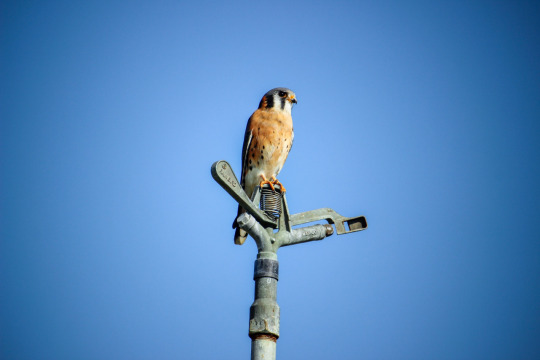
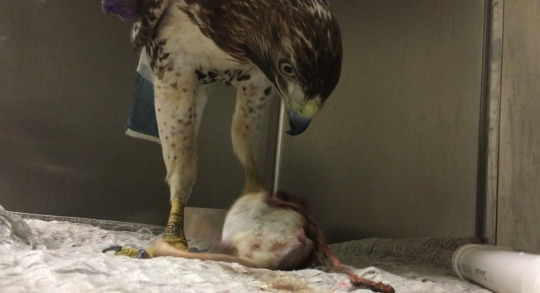

Wading bird:
Roseate spoonbill
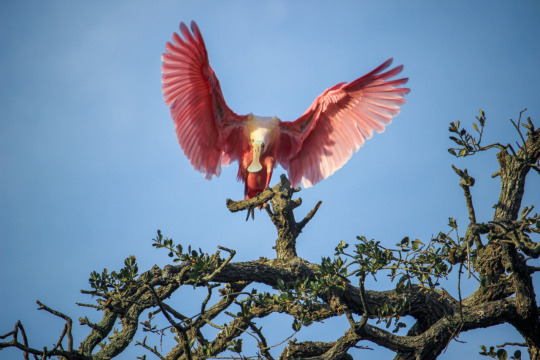
Passerine:
Loggerhead shrike, Florida scrub jay


Diving bird:
Nazca booby, Northern gannet (haven’t photographed one yet, photo by Owen Deutsch)


Crane:
Sandhill crane ❤️

These are some of my great loves but truly there are so many more! I could keep going and make this so long honestly. There are too many awesome birds on this Earth!
97 notes
·
View notes
Text
Moth of the Week
Ornate Bella Moth
Utetheisa ornatrix

This moth was first described as Phalaena ornatrix and Phalaena bella by Carl Linnaeus in 1758. In 1960, it became known as the Utetheisa ornatrix by William Trowbridge Merrifield Forbes. It’s also called the ornate bella moth, ornate moth, bella moth or rattlebox moth and is in the family Erebidae.
Description The body is white with black spots on the back of the thorax and head. The legs are black and white and antennae are black and filiform. The hindwings are a pale or bright pink with an irregular black border. The forewings are orangish-yellow with white bands surrounding black dots. Patterns may vary. These colors are used to warn predators of the moth’s toxicity.
Wingspan range: 33 - 46 mm (1.3 - 1.8 in)
Diet and Habitat The larva feed on plants of the Crotalaria species such as Avon Park rattlebox, rabbitbells, smooth rattlebox, and showy rattlebox. These plants provide the larva and adults with alkaloid compounds which are the unpalatable to predators. They accumulate these toxins from the seed pods of these plants, however if the larva can’t eat a seed pod due to competition they will have to eat the leaves where is concentration is much lower. Larvae may prey on/eat others of its kind to maintain high levels of alkaloids. Alkaloids are also passed down from parents to eggs.
Its northern most range is from Connecticut westward to southeastern Nebraska and southward to southern New Mexico and Florida in the United States. Its southern most range is from Mexico, South America, and Central America. It’s southernmost reach is southeastern Brazil. This species is more common in tropical parts of this range due to host plant populations.
Mating This species demonstrates a form of sexual selection. The females choose a male to mate with based on the intensity of their pheromones. During mating, the females receive a “spermatophore” from the males containing sperm, nutrients, and alkaloid compounds. After mating, the females choose which males’ sperm fertilizes the eggs. Usually, the female chooses the male with the most alkaloids which tends to be the larger males. Adult males invest up to 11% of their body mass to create a spermatophore they provide to a female during mating. The nutrients given in the spermatophore allow the female to produce an average of 32 additional eggs in her brood.
Females mate an average of 4-5 times and up to 13 times, each with a different male. In the north there there two generations per year with more in the south.
Predators The larva and adults keep predators at bay with alkaloid compounds accumulated during feeding and inherited from parents. These toxins make them unpalatable to their main predators: spiders and bats. Specifically, the adult moth secretes an alkaloid foam from its head when threatened. However, larva and moths with low concentrations are more susceptible to predation than those with higher concentrations who are usually released and unharmed after being caught.
These toxins do not work against some predators like loggerhead shrikes.
Unlike other moths of the Arctiidae subfamily, this species moth does not have a way to audibly communicate their toxic which would help it to avoid bats altogether.
Fun Fact This species was first described on 1758 by Carl Linnaeus as two different species: Phalaena ornatrix was used to describe the paler moth specimens, and Phalanea bella, described the bright pink moth specimens. It was then moved to the genus Utetheisa in 1819 by Hübner. After nearly a century of struggling to identify this species and its subspecies, Forbes combined both species Utetheisa ornatrix and Utetheisa bella into one in 1960: Utetheisa ornatrix.
(Source: Wikipedia; The Island Packet; Institution of Food and Agricultural Sciences, University of Florida)
#libraryofmoths#animals#bugs#facts#insects#moth#mothoftheweek#lepidoptera#ornate bella moth#bella moth#rattlebox moth#ornate moth#Erebidae#Utetheisa ornatrix
125 notes
·
View notes
Text
What's the Bird?
Location: Tampa Bay, Florida
Date: January
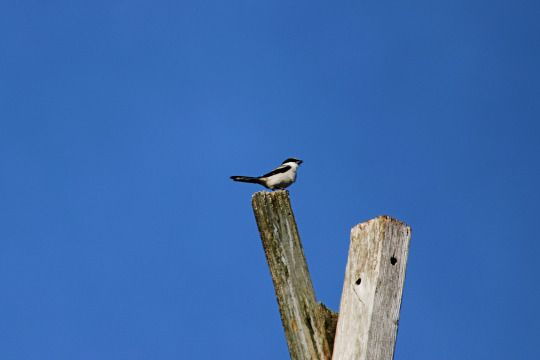
We ask that discussion under questions be limited to how you came to your conclusion, not what your conclusion was.
Happy Birding!
Keep the game alive! Submit a bird HERE
Bird-90 graciously submitted by @satellite-juice
26 notes
·
View notes
Text
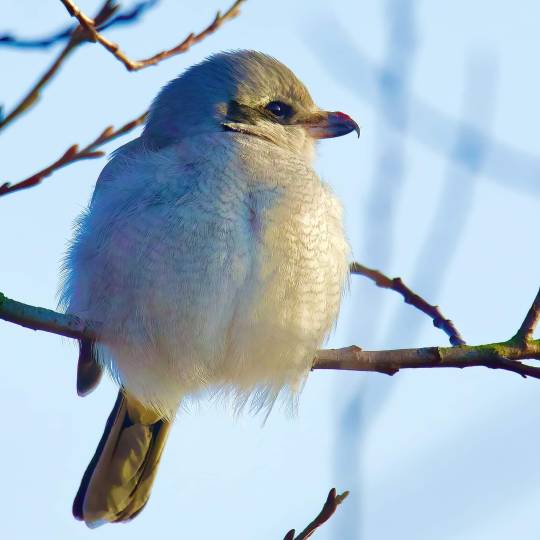
Charlotte Allen
Northern Shrike
Lummi flats, Whatcom County, Washington
20 notes
·
View notes
Text
I guess it's time I share my list of birds from this past Jewish year (I've been keeping two Big Year lists, Jewish year and secular year). All are from the US, except the last few which are indicated.
1. Ruby-crowned kinglet
2. American Robin
* Leucistic American Robin
3. Song sparrow
4. Rock pigeon
* Melanistic rock pigeon
5. Chipping sparrow
6. Hairy woodpecker
7. Mourning dove
8. Northern flicker
9. Eastern towhee
10. White crowned sparrow
11. White-throated sparrow
12 Savannah sparrow
13. House sparrow
14. European starling
15. American Crow
16. Common Raven
17. Gray catbird
18. Northern mockingbird
19. Canada Goose
20. Spotted Sandpiper
21. American herring gull
22. Marsh wren
23. Limpkin
24. Great white heron
25. Cattle egret
26. Anhinga
27. Snowy egret
28. Great blue heron
29. Black-crowned night heron
30. Wood stork
31. Common gallinule
32. Blue-gray gnatcatcher
33. Turkey vulture
34. Black vulture
35. Yellow rumped warbler
36. Tufted titmouse
37. Little blue heron
38. White ibis
39. Cooper's hawk
40. Cardinal
41. Green heron
42. Carolina wren
43. Palm warbler
44. Pine warbler
45. Sandhill crane
46. Carolina chickadee
47. Bluejay
48. Osprey
49. Chimney swift
50. Red-tailed hawk
51. Prairie warbler
52. American kestrel
53. Glossy ibis
54. Pied-billed grebe
55. Double-crested cormorant
56. Grey kingbird
57. Brown pelican
58. Fish crow
59. Royal tern
60. Bald eagle
61. Painted bunting
62. American white pelican
63. Common grackle
64. Boat-tailed grackle
65. Great-tailed grackle
66. American purple gallinule
67. American coot
68. Brown-headed cowbird
69. Tricolored heron
70. Mallard
71. Black-bellied whistling duck
72. Eastern kingbird
73. Yellow-billed cuckoo
74. Muscovy duck
75. American bittern
76. Ring-billed gull
77. American Pekin
78. Mallard-Pekin hybrid
79. Eastern bluebird
80. Yellow-bellied sapsucker
81. Red-winged blackbird
82. White-eyed vireo
83. Mottled duck
84. Broad-winged hawk
85. Dark-eyed junco
86. Brown thrasher
87. Sharp-shinned hawk
88. House finch
89. Eastern Phoebe
90. Downy woodpecker
91. Fox sparrow
92. Loggerhead Shrike!!!!
93. White breasted nuthatch
94. Red-bellied woodpecker
95. Brown creeper
96. Pileated woodpecker
97. American goldfinch
98. House wren
99. Barn swallow
100. Tree swallow
101. Black and white warbler
102. Red eyed vireo
103. Yellow warbler
104. Mute swan
105. Rusty blackbird
106. Common yellowthroat
107. Warbling vireo
108. Northern waterthrush
109. Veery
110. Swamp sparrow
111. Wood duck
112. American redstart
113. Orchard oriole
114. Greater Yellowlegs
115. Lesser Yellowlegs
116. Baltimore oriole
117. Hermit thrush
118. Wood thrush
119. Ovenbird
120. Indigo bunting
121. Black-throated blue warbler
122. Scarlet tanager
123. Worm-eating warbler
124. Northern rough-winged swallow
125. Blue-headed vireo
126. Northern parula
127. Prothonotary warbler
128. Philadelphia vireo
129. Blackburnian warbler
130. Magnolia warbler
131. Cedar waxwing
132. Blackpoll warbler
133. Yellow-throated vireo
134. Eastern wood pewee
135. Acadian flycatcher
136. Tennessee warbler
137. Caspian tern
138. Laughing gull
139. Forster's tern
140. American oystercatcher
141. Green-winged teal
142. Purple Martin
143. Least tern
144. Field sparrow
145. Killdeer
146. Grey-cheeked thrush
147. Rose-breasted grosbeak
148. Great-crested flycatcher
149. Swainson's thrush
150. Bay-breasted warbler
151. Chestnut-sided warbler
152. Willow flycatcher
153. Ruby-throated hummingbird
154. Peregrine falcon
155. Hooded crow IL
156. Laughing dove IL
157. Eurasian collared dove IL
158. Eurasian jackdaw IL
159. Common myna IL
160. Rose-ringed parakeet IL
161. White spectacled bulbul IL
162. European bee eater IL
163. Chukar IL
164. Short toed snake eagle IL
165. White stork IL
166. Little egret IL
167. Pygmy cormorant IL
168. Eurasian hoopoe IL
169. Alpine swift IL
170. Graceful pinia IL
171. Eastern Olivaceous Warbler IL
172. Tristan's Starling IL
173. Fan tailed raven IL
174. Eurasian black cap IL
Here's to at least 200 next year!
32 notes
·
View notes